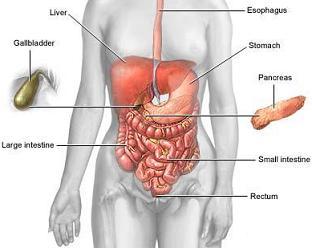Hepatitis A
Hepatitis A
Definition
Hepatitis A is an inflammation (irritation and swelling) of the liver caused by the hepatitis A virus.
Alternative Names
Viral hepatitis
Causes
Hepatitis A is transmitted by contaminated food or water, or contact with a person who is currently ill with the disease. The hepatitis A virus is shed in the stools of an infected person during the incubation period of 15 to 45 days before symptoms occur and during the first week of illness.
The symptoms associated with hepatitis A are similar to the flu, but the skin and eyes may become yellow. This is because the liver is not able to filter bilirubin from the blood. Other common hepatitis virus infections include hepatitis B and hepatitis C, but hepatitis A is the least serious and most mild of these diseases. Both of the others may become chronic illnesses, but hepatitis A does not.
Symptoms
- Jaundice
- Fatigue
- Loss of appetite
- Nausea and vomiting
- Low-grade fever
- Pale or clay-colored stools
- Dark urine
- Generalized itching
Prevention
Transmission of the virus can be reduced by avoiding unclean food and water, thorough hand-washing after defication, and thorough cleaning of hands if there is any contact with an affected person's blood, feces, or any other bodily fluid.
Institutions involving close contact with people may be more susceptible to rapid transmission of hepatitis A. Thorough hand-washing before and after each diaper change, before serving food, and after using the restroom may help prevent institutional outbreaks.
Immune globulin should be given to people in close contact with people with hepatitis A.
Vaccines that protect against hepatitis A infection are available. The vaccine begins to protect 4 weeks after receiving the first dose; the 6- to 12-month booster is required for long-term protection.
Illustrations and Images

Source: Portal Content Team
Related resources
अंतिम बेर संशोधित : 2/20/2020
This topic deals with information related to Anima...
Reasons for discharge from ear, symptoms and preca...
This topic covers information about Amoebic Liver ...
Basic information on Malaria including symptoms, c...
